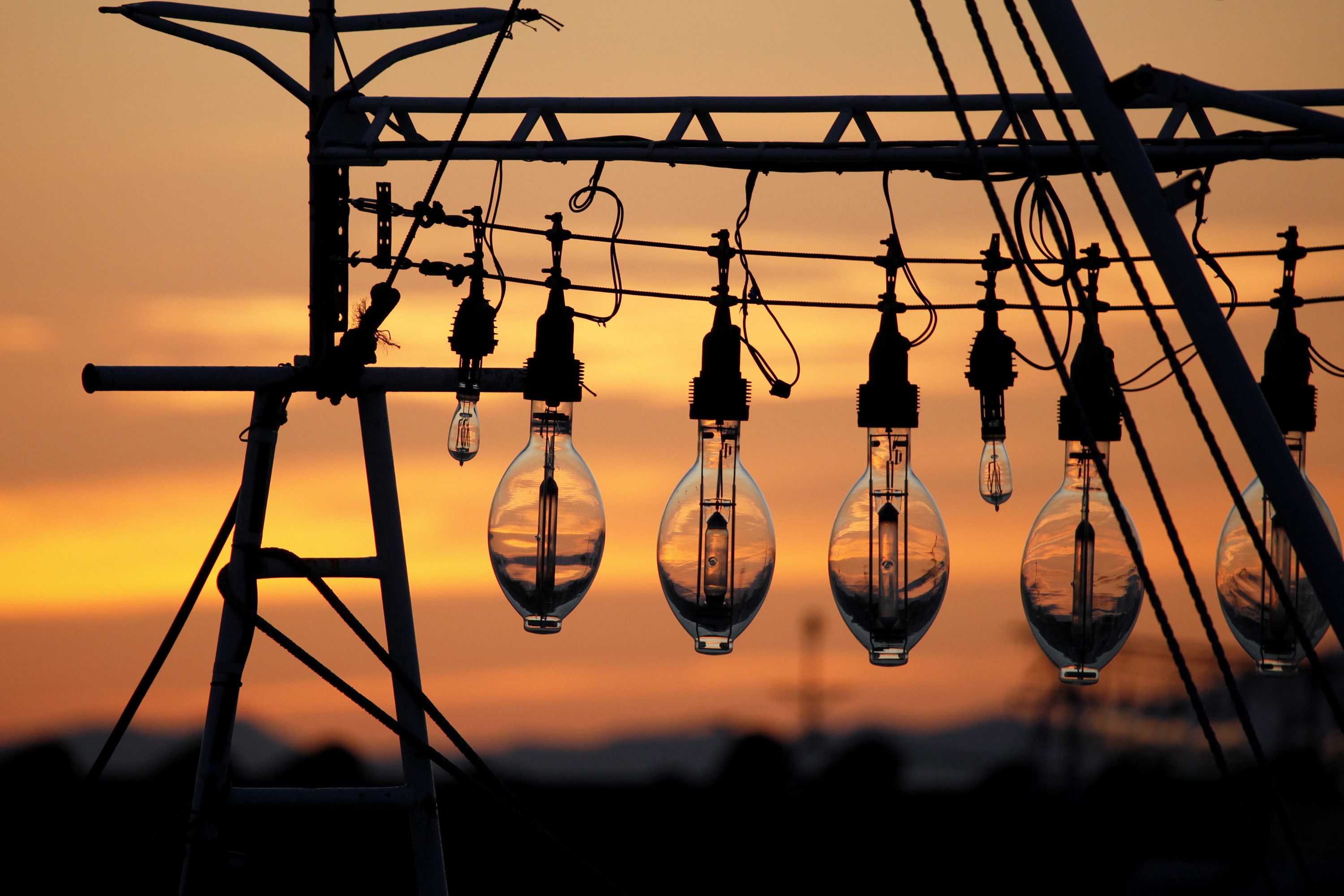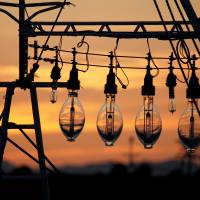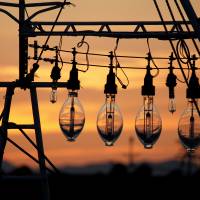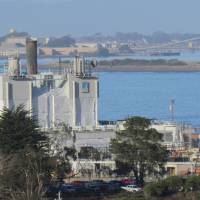At the edge of Humboldt Bay in Northern California lies a relic from the heyday of U.S. nuclear power.
The reactor was shut down in 1976. The remaining cost to decommission the plant once and for all — cleaning up lingering radiological dangers, dismantling the remains — will be about $441 million, according to its owner, PG&E Corp.
The question is who will pay — for Humboldt Bay, and for dozens of other reactors that are in the process of closing or might soon.
Nuclear operators like PG&E are supposed to lay up enough money to cover the costs, similar to how corporations fund pensions. Turns out, most haven't.
PG&E's Humboldt Bay trust fund, for instance, is currently $308 million short, according to a company filing to the U.S. Nuclear Regulatory Commission. PG&E customers will shoulder the cost in the form of higher electricity bills.
"Somebody's got to pay for it — the money doesn't come from magic," said Allison M. Macfarlane, a former NRC chairman. Brittany McKannay, a PG&E spokeswoman, said the company is committed to operating and decommissioning its nuclear plants safely.
The U.S. nuclear industry is feeling its age. Once touted as a source of electricity that would be "too cheap to meter," plants need expensive upgrades to protect them from terrorism and natural disasters.
At the same time, they face growing competition from renewables and natural gas. Five new reactors are under construction, but current economics give little incentive to build more. Looming is an unprecedented wave of closures.
Yet 82 of the 117 U.S. nuclear power plants, including seven in the process of shutting down, don't have enough cash on hand to close safely, according to NRC records. And closing tends to cost more than operators expect. Based on NRC filings, the actual combined cost may be somewhere in the neighborhood of $100 billion — $43 billion more than the current balance of the trust funds.
So the coming closures could drag on for decades and place unexpected burdens on investors, consumers or taxpayers.
"The public has a right to demand that all nuclear power plant operators are secure in their funding," Sen. Edward J. Markey, a Massachusetts Democrat on the Environment and Public Works Committee, said in a statement in response to questions from Bloomberg.
Among the underfunded plants are FirstEnergy Corp.'s Three Mile Island in Pennsylvania, site of the 1979 partial meltdown, and Entergy Corp.'s Indian Point, about 35 miles north of New York City.
The plants are on track to meet their required funding levels, said Michael Dusaniwskyj, an NRC economist. It's fine to have less money now because the funds will grow through investments, he said. Both Jennifer Young, a FirstEnergy spokeswoman, and Jerry Nappi, an Entergy spokesman, said there's enough time for their decommissioning funds to increase to meet costs.
Operators announced plans to close five plants in 2013, the most ever in a single year. Exelon Corp., the largest operator, has said it may close three plants in Illinois. An additional 20 reactors may close soon, according to Judd Gregg, a former Republican senator from New Hampshire and now co-chairman of Nuclear Matters, an organization that promotes atomic energy.
The latest plant to retire is Entergy's Vermont Yankee, about 80 miles northwest of Boston. The 43-year-old reactor shut down in December, 17 years ahead of schedule, because of high costs and low natural gas prices.
Decommissioning is projected to take 60 years and cost $1.2 billion. The balance in the plant's trust fund at the end of 2014: $664.6 million.
Entergy said in NRC filings the fund would grow over the coming decades, projecting a $177.7 million surplus by the time the decommissioning process is finished in 2075. The company asked permission to use the trust for other purposes, such as security. As soon as the value of the trust meets the cost estimate, Entergy will start dismantling Vermont Yankee within 120 days, Marty Cohn, a spokesman, said.
The state of Vermont and local community organizations want to reserve the fund for cleaning up radiation and to ensure Entergy commits enough money to cover any overruns.
The money is "not all there, and it's not clear how it's going to get there," said Deb Katz, a social worker and community organizer who lives 16 miles from the plant. "We don't even know that Entergy will be an entity in 60 years. We don't know who will be responsible."
Reactor owners report the status of their trusts to the NRC every other year. The combined funds totaled $57.7 billion at the end of 2014, according to the latest filings. The minimum amount required under an NRC formula was $61.8 billion.
The formula provides a target amount for the cost of decommissioning when a plant's license expires, compared with the projected value of the trust fund in that year, according to Dusaniwskyj, the NRC economist. Any plant that isn't on pace to meet its obligations must demonstrate how it will cover the shortfall, he said.
"It's not foolproof, it's reasonable," Dusaniwskyj said. "And so far, it's worked."
Both an NRC-commissioned review and a report from the U.S. Government Accountability Office said that the formula understates actual shutdown costs. For the 45 reactors that completed more detailed studies, cost estimates averaged 68 percent higher than the NRC formula, records reviewed by Bloomberg show. Applying that percentage to the rest of U.S. reactors showed a shortfall of $43 billion.
Those figures don't include disposing of nuclear waste and restoring sites so they can be put to other uses, which can cost many millions more. Companies have had to store the waste in their own facilities for decades because the federal government has failed to deliver on its promise of a permanent disposal site.
The $43 billion shortfall means shutdowns will probably cost more than the NRC requires reactor owners to plan for, said Julia Moriarty, a researcher who studied the funds for investment consulting firm Callan Associates Inc.
Plant operators have recently increased investments in stocks and alternative assets such as private equity, hedge funds and real estate in hopes of generating higher returns, said David Emerson, a consultant at LCG Associates Inc. in Atlanta who specializes in the trusts. Investor-owned companies have bought more of the nuclear facilities, and unlike regulated public utilities, they don't necessarily have customer bases they can tap for money, he said.
NRC rules allow companies to assume the funds will earn a 2 percent real rate of return. Filings for at least 20 plants projected a higher rate — as much as 5.3 percent, NRC records show. The NRC doesn't monitor how the money in the trusts is invested, Dusaniwskyj said.
"I don't think a lot of these utilities know what anyone is going to do if they fall short," Moriarty said.






